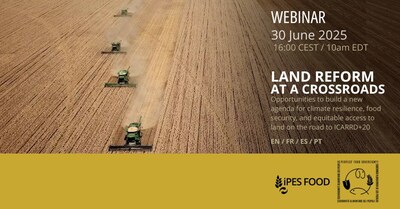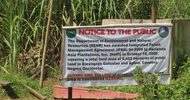Global Land Project | August 2010

Land Grab in Africa: Emerging land system drivers in a teleconnected world
by Cecilie Friis & Anette Reenberg
(Report includes detailed table of investments according to country)
Introduction
The land change science community has for decades focused on the accelerating pressure on the Earth’s limited land resources (e.g. Lambin & Geist 2006) caused by human-environmental interaction, and large research efforts have been put into identifying and differentiating the proximate and underlying driving forces of land use and land cover changes at local to global scales. Turner et al. (2007) summarize the current state of insight by noting that virtually all land has been affected in some way by human action and that much of this change is a direct consequence of land use: 40% of the Earth’s land surface is used for agriculture (including improved pasture and coadapted grassland).
Hence, human land use decisions play a crucial role in driving changes in the land system and the dynamic interaction between socioeconomic and biophysical drivers of change (GLP 2005). The complexity of the coupled human-environmental system is widely acknowledged and the portfolio of drivers of change is continuously developing as a result of evolution or radical shifts in economic, social, cultural or environmental conditions. As an example, the recent global crises in food, energy, finance and the environment has driven a change in perspectives of land ownership, as powerful transnational and national economic actors acquire large tracts of land outside their own national borders in order to provide food and energy security at home. The terms ‘teleconnection’ and ‘land grab’ have emerged to describe the disconnection of demand and production spaces and the explosion of global commercial land transactions revolving, for example, around the production and sale of food and biofuels. On this background, land grabbing is certainly to be considered an emerging, prominent factor on the list of significant drivers of land system change in certain parts of the globe.Especially the lands of the Global South are increasingly perceived as a potential factor of production for the increasing global demand for alternative energy (primarily biofuels), food crops, mineral deposits and reservoirs of environmental services. Notably Africa has become an attractive destination for land investments (Mbow 2010) because of its relatively low population density. Millions of hectares are bought or leased by nations or private companies based outside Africa, as well as by more wealthy countries on the continent such as Libya and Egypt.
Although foreign nationalities have been engaged in agriculture in Africa for many years, the scale of the business has increased dramatically in recent years. Some see this as a major threat to the livelihoods of the local rural poor. Others see economic opportunity for local communities that could benefit from the income generated from the leasing or selling of the land. The debate on informal websites (i.e. GRAIN 2010; ILC Bloc 2010) and in more rigorous reports (Cotula et al. 2009; Görgen et al. 2009; Smaller & Mann 2009; von Braun & Meinzen-Dick 2009) has been considerable in the last couple of years. However, precise information on the magnitude of the challenge, in terms of the amount and location of land concerned, is very limited. The ambition of this GLP report is to scrutinize and triangulate the scattered quantitative information that is currently available from various informal sources on land grabs in Africa in order to provide an answer to the question of ‘where, how much and for what’ investors have been acquiring land on the African continent. By this, we aim to provide reasonably GLP Report No. 1 – Land Grab in Africa accurate insight into the magnitude of this emerging pressure on land as of April 2010, when the information search was concluded.
....
Conclusion
This report has examined the international investments in agricultural lands in Africa. A quantitative estimate for the magnitude of the land deals has been given, based on the available media information in the International Land Coalitions’ blog Commercial pressures on land. Despite some reservations concerning accuracy of the data, the results of the analysis indicate that the magnitude of the land deals is significant and that land deals currently are negotiated throughout Africa. The results presented here indicate that the amount of land concerned could be as large as 51 to 63 mio ha – an area equivalent to France.
A cluster of deals are identified in the eastern part of the African continent in countries like Ethiopia, Mozambique, Uganda and Madagascar, while other large recipient countries are Sudan, Mali and the Democratic Republic of Congo. In ten of the identified recipient countries the deals represent more than 5% of the current agricultural area – in Uganda more than 14%, in Mozambique more than 21% and in DR Congo more than 48% of the agricultural land! Thus, the consequences of the land deals can be expected to be very large for the local population and environment, with impacts such as agricultural intensification, forest degradation, displacement of local populations, increasing local food insecurity and increasing poverty. All in all, the international land investments have emerged as a new significant driver of land system change in an increasing teleconnected world.















